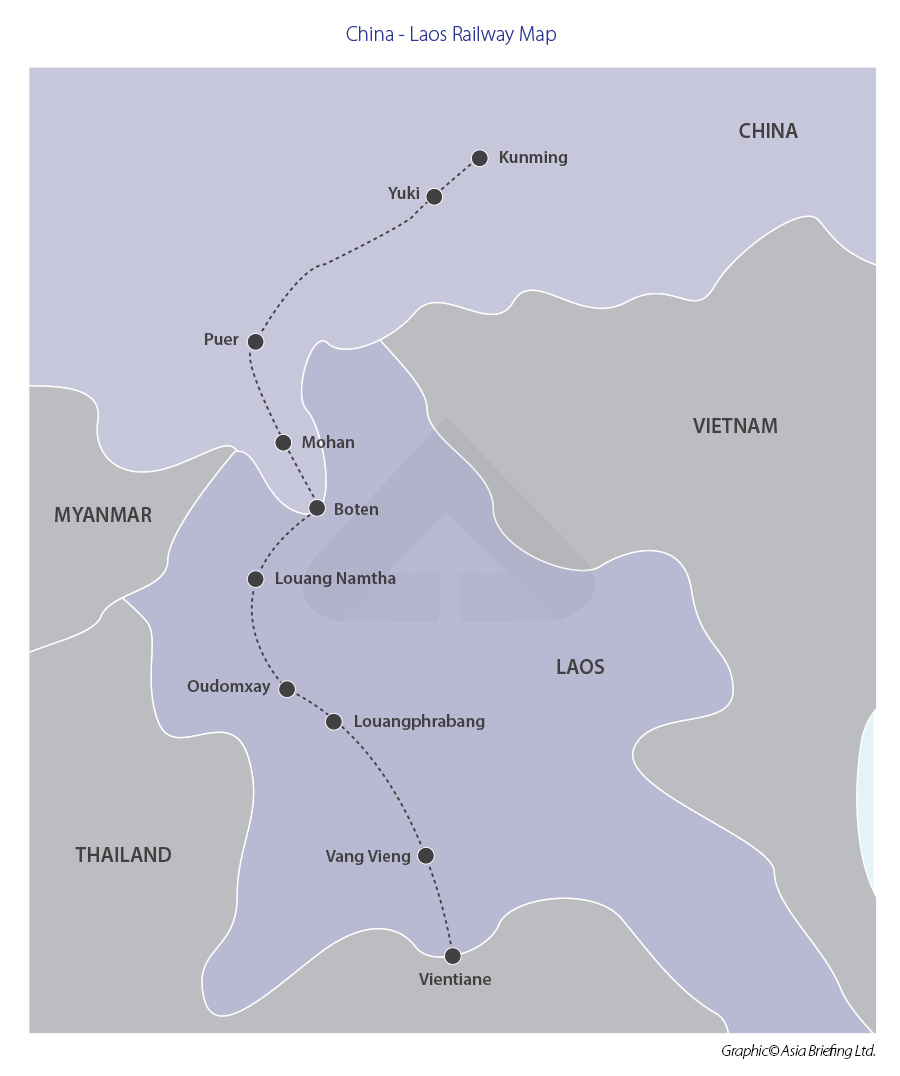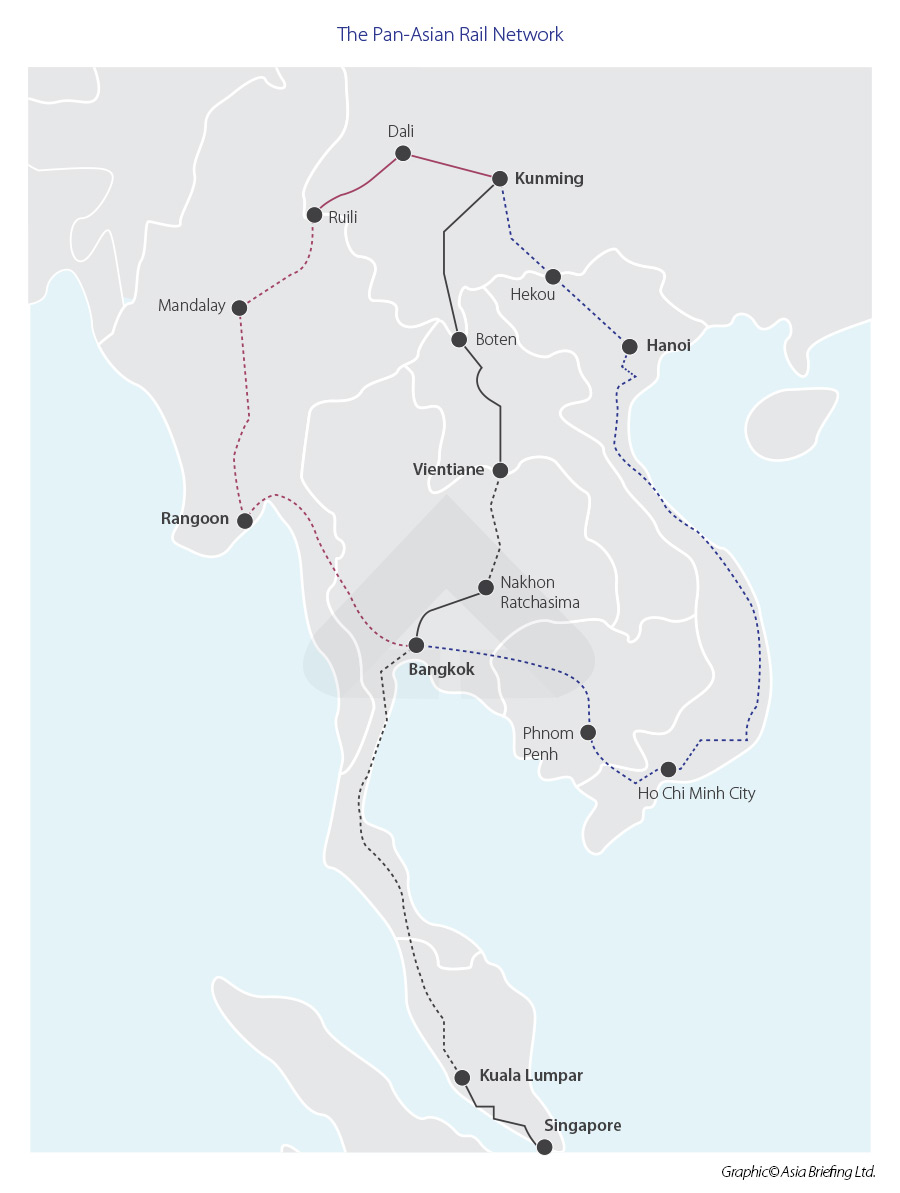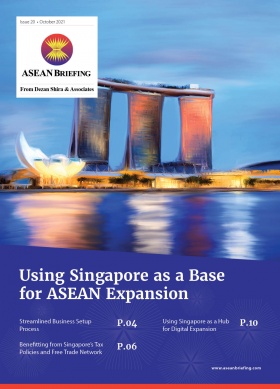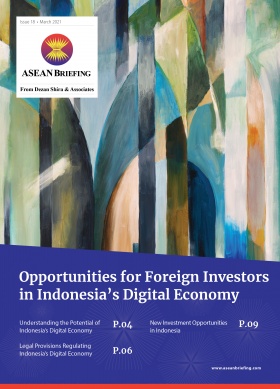The Completed China-Laos Railway: Bringing Opportunities for ASEAN and the Asia Pacific
In early December 2021, Laos inaugurated the Boten-Vientiane railway, a 414-kilometer (km) electrified high-speed railway that runs between the capital Vientiane and the town of Boten on the Laos-China border.
This US$6 billion project (equivalent to one-third of Laos’ GDP) is backed by China as part of its Belt and Road Initiative (BRI) and is a linchpin of the deepening ties between the two countries. Traveling to the Chinese border now takes less than four hours compared to the 15 hours by car and costs US$33 for a second-class seat. At Boten, the line heads north some 595km before ending in Kunming, the capital of China’s Yunnan province, and could significantly transform connected this landlocked mountainous country and attract greater foreign investment and tourists. Logistics costs from Vientiane to Kunming are expected to drop by some 40 to 50 percent.
The southern part of the line will connect the Thai province of Nong Khai to the capital Bangkok.
Transforming Laos into a land-linked country
The new railway can transform Laos from a landlocked country that was the least industrialized in ASEAN into a land-linked hub that connects to the wider region. The northern part of the country, where the railway passes through, has been relatively removed from centers of business and commerce.
Infrastructure-poor Laos previously had only four kilometers of the railway before the completion of the Boten-Vientiane railway. Through improved connectivity, the country can facilitate more trade between provinces, ASEAN neighbors, as well as with China. An initial 300,000 containers from Laos will be transported via the railway to Europe from China annually. This is expected to increase to between 1.2 and 1.8 million containers per year.The majority of China-ASEAN trade (worth more than US$600 billion in 2020) relies mainly on maritime routes with the Laos-China trade representing less than two percent of the total China-ASEAN trade. As such, according to a World Bank report, transit trade through Laos could reach 3.9 million tons by 2030 from 1.6 million tons in 2016 and shift an estimated 1.5 million tons of maritime transport to the railway.
With the pandemic impacting Laos’ economy in 2020 (a decline of 0.4 percent), the railway will also bolster new investments in the country. The government has started the development of Laos’ first-ever integrated logistics facility as it prepares for the shift from sea trade to road and rail. The same World Bank report states that only 2 million tons were transported via Laos from a total of 40 million worth of trade between China, Thailand, Malaysia, and Singapore in 2016.
The new facility will include the expansion of Thanaleng dry port by end of 2021 and the expansion of the greenfield Vientiane logistics park to be completed by 2030. In addition, the government will build export processing zones around stations and targeted investments in agriculture and tourism could be new export opportunities for the country.
Prior to the pandemic, Laos was attracting between 800,000 to 1 million Chinese tourists annually and this figure could rise by up to 50 percent once international travel resumes.
It is up to the local government to boost reforms and develop supporting infrastructure to truly benefit from this improved connectivity.
Pan-Asian railway coming to the realization
The Boten-Vientiane railway marks a major milestone in the Pan-Asian rail network, which is part of the much grander Trans-Asian Rail network.
The Vientiane line is an integral section of the Pan-Asian rail network, which has three routes: the central route from Kunming to Laos and finally Bangkok; the western route which extends through Myanmar and Thailand; and the eastern route crossing Vietnam, Cambodia, and Thailand before connecting in Bangkok and extending southwards towards Malaysia and Singapore.However, Malaysia and Thailand have proven to be tough bargaining partners for the project. Malaysia initially froze construction in 2018 but continued one year later after China reduced the original price tag of US$20 billion by one-third. In Thailand, after more than 30 rounds of negotiations, the government has only approved construction of less than one-third of the line from its border with Laos to Bangkok, although this is expected to be speeded up.
Once completed, travelers from Portugal could technically travel to Singapore by rail in just 21 days, stopping in connections in Paris, Moscow, Beijing, and Bangkok.
Ultimately, the Pan-Asian railway will bring new trade linkages to the ASEAN trade bloc and the wider Asia-Pacific region, which is timely as the Regional Comprehensive Economic Partnership ((RCEP) – the world’s largest-ever free trade agreement – is set to be ratified for most members in 2022. All ASEAN states are signatory to the RCEP.
About Us
ASEAN Briefing is produced by Dezan Shira & Associates. The firm assists foreign investors throughout Asia and maintains offices throughout ASEAN, including in Singapore, Hanoi, Ho Chi Minh City, and Da Nang in Vietnam, Munich, and Esen in Germany, Boston, and Salt Lake City in the United States, Milan, Conegliano, and Udine in Italy, in addition to Jakarta, and Batam in Indonesia. We also have partner firms in Malaysia, Bangladesh, the Philippines, and Thailand as well as our practices in China and India. Please contact us at asia@dezshira.com or visit our website at www.dezshira.com.









